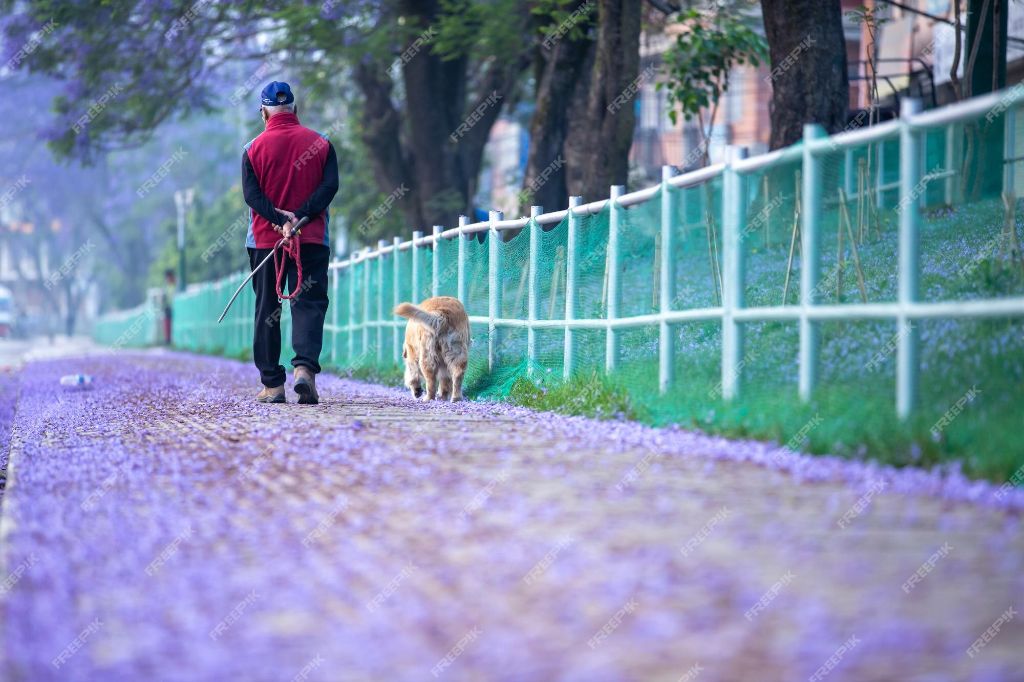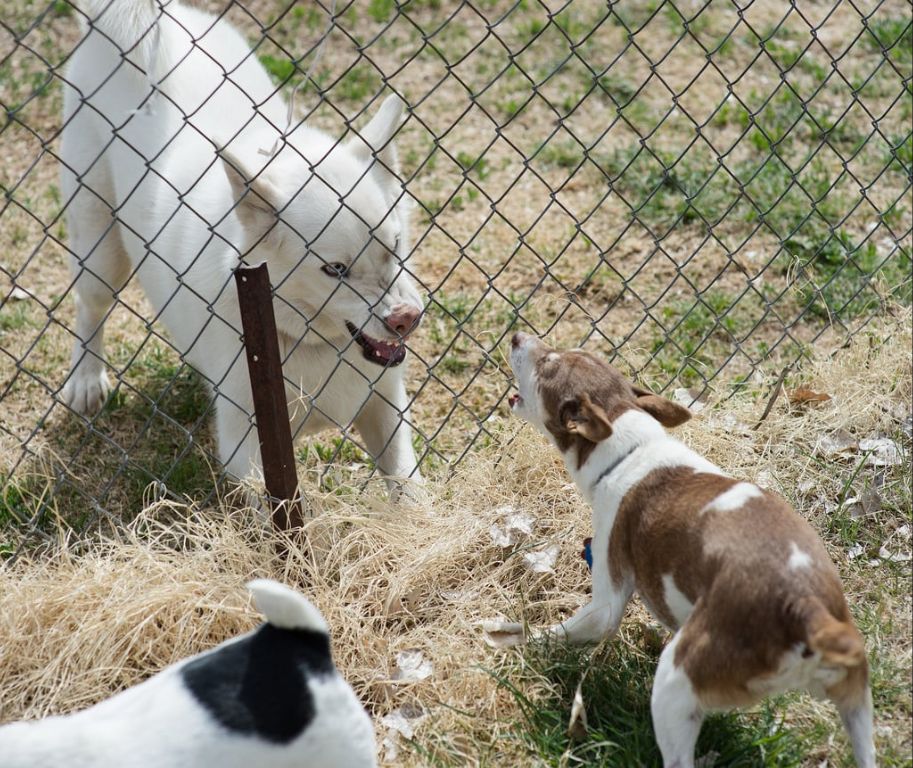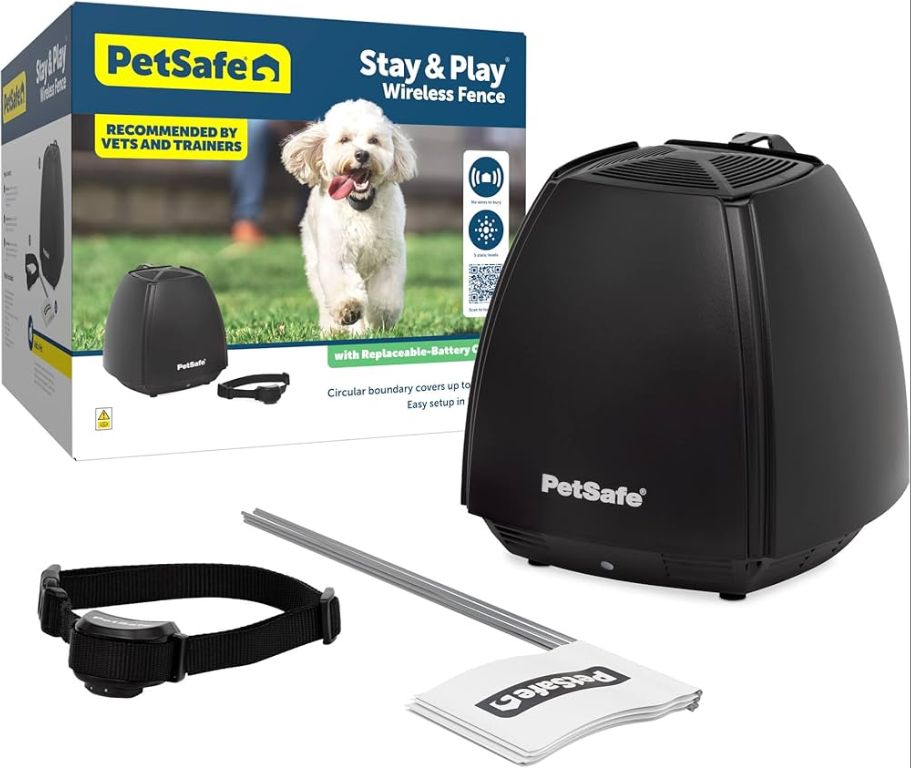Introduction
For dog owners, installing a fence around their property can provide major benefits for both them and their furry friends. Fencing in your yard creates a safe, enclosed space for dogs to play and roam freely without supervision. It prevents them from wandering into unwanted areas or getting lost. A fence also protects your landscaping and gardens from damage caused by your pets. But deciding where to locate the fence boundaries on your property is an important consideration.
This article will provide guidance on determining the ideal start and end points when installing a dog fence on your property. We’ll cover how large of an area you need, choosing durable fencing materials, properly training your dog on the new boundaries, and tips for maintaining the fence over time. Whether you’re installing a physical fence or an underground invisible fence, proper planning of the layout is crucial for success. Read on for advice to help maximize the benefits of your investment in a dog fence.
Background on Dog Fences
Dog fences serve several important purposes for both pet owners and their dogs. According to Storables, dog fences allow owners to give their pets more freedom to run around and play while still keeping them safely confined to a designated area. Fences prevent dogs from wandering off and getting lost or hurt, which is a risk for breeds that tend to roam. They also keep pets away from dangers like traffic and bodies of water. Additionally, fences protect dogs from potentially threatening wildlife, and protect local wildlife from dogs as well. For owners, fences provide peace of mind that their pet has space to play and exercise while remaining secure.
Where to Start the Fence
When deciding where to start and end your dog fence, there are a few key factors to consider:
First, look at your property lines. You’ll want the fence to enclose the area within your property, so checking the property survey or walking the boundary lines will give you an idea of the maximum space you have to work with. Be sure to leave a buffer between the fence and any property lines, especially if you have neighbors. This will prevent any disputes over the fence encroaching on adjacent properties.
Next, look for any utilities that run through your yard, like underground cables or pipes. You’ll want to avoid these with the fence installation so you don’t damage or interfere with them. Mark where any utilities are located.
Also evaluate the terrain and landscape of your yard. Avoid steep slopes or areas that are prone to erosion and flooding. Consider existing landscaping and trees as well – you may need to work around these features.
Once you’ve assessed property lines, utilities, and terrain, you can determine the ideal starting and ending points for your dog fence based on the usable space available. Mark these points with stakes or flags to guide the fence installation.
How Big Should the Fenced Area Be?
The size of the fenced area for your dog depends on several factors, including breed, energy level, and number of dogs.

For most breeds, experts recommend having at least 200 linear feet of fencing, which would create roughly a 20′ x 20′ space (Artistic Fence NJ, 2021). However, more active breeds like Labradors and Border Collies need ample room to run around. For these energetic dogs, aim for at least 400-600 linear feet of fencing or more.
The number of dogs you have also impacts space needs. Add an extra 200 linear feet per additional dog to prevent overcrowding. More dogs require more room to play and eliminate comfortably.
Consider your dog’s typical energy level as well. High energy dogs should have larger enclosures to expend their energy, while lower energy dogs may be content with less space. Providing adequate room for exercise helps prevent problem behaviors caused by boredom or confinement.
Ultimately, the bigger the fenced area the better when it comes to giving your dog an enriched outdoor experience. Customize the space based on breed tendencies, energy needs, and number of dogs (Pet Playgrounds, 2018). An experienced fencing contractor can help determine ideal dimensions.
Choosing Fence Materials
When selecting a material for your dog fence, there are a few key factors to consider: cost, durability, appearance, and your dog’s tendencies. Three of the most popular fencing materials for dog runs are chain link, wood, and vinyl.
Chain link is one of the most affordable and durable options. It provides security while still allowing your dog to see through the fence. However, it has an industrial look that some homeowners don’t prefer. It also requires more maintenance over time as the galvanized steel can start to rust. Chain link fencing can run between $10-$30 per linear foot installed (source).
Wooden fences, such as privacy or picket styles, provide an attractive look and block wind. Cedar and redwood are naturally rot-resistant woods that hold up well outdoors. But other types of wood will require regular staining or sealant to prevent deterioration. Chewing or digging dogs can also damage wood over time. Wood fencing averages $15-$35 per linear foot installed (source).
Vinyl is one of the more expensive options upfront, but provides very low maintenance over time. It won’t rust or rot, and comes in a variety of colors and opacities. However, vinyl can become brittle and crack in extremely cold weather. Digestive acids from chewing can also stain it. Vinyl fencing starts around $20 per linear foot installed (source).
When planning your dog run, think about your specific needs and preferences to select the ideal fencing material. Your contractor can also provide recommendations based on your yard size, layout, climate, and other factors.
Installing the Fence
When it comes to installing an underground dog fence, you have two main options – doing it yourself or hiring a professional. DIY installation can save money, but requires more time and effort. Professional installation costs more upfront but ensures proper setup and reduced hassle.
If installing the fence yourself, be prepared for a labor-intensive process. You’ll need to layout the boundary, dig trenches about 3-6 inches deep to bury the wire, splice wires and make connections, troubleshoot any issues, and test the system thoroughly before use. Having another person help makes DIY installation easier. Carefully follow the manufacturer’s instructions.
Professional installation by the dog fence company or a certified expert ensures the system is set up properly. The process is handled start to finish by experienced technicians, reducing the work and frustration for the owner. Professionals have the right tools and knowledge to lay out the ideal boundary and achieve optimal signal transmission. This typically costs $100-300 more than a DIY kit.
Weigh the pros and cons of each approach carefully. DIY is less expensive but very hands-on. Professional installation costs more but delivers convenience and peace of mind. Check if any local installers offer free estimates to help choose the best option for your needs.
Sources:

https://www.youtube.com/watch?v=ueYmGTf2LKc
Marking the Fence Boundary
One of the most important steps when installing a new dog fence is properly marking the boundary line so your dog knows where the limits are. There are a few common ways to mark a dog fence boundary:
Flags – Many people use flags or stakes placed every 10 feet or so along the boundary line. Popular options are these Boundary Training Flags that come 100 to a pack, or these PetSafe Boundary Flags sold in bundles of 50. The flags are a clear visual cue for your dog during training. After about 2 weeks when your dog is trained, you can being removing the flags.
Paint/Chalk – You can also mark the boundary line using brightly colored paint or chalk. This allows you to draw a clear line on the ground that your dog can see. Just be sure to use pet-safe paint or chalk. Reapply as needed, especially after rain.
Signs – For fences along a property line, it’s smart to install signs signaling there is an invisible fence. This alerts passerbys, delivery drivers, utility workers etc. that your dog’s space extends beyond the physical fence.
Training Your Dog on the New Fence
One of the most important steps after installing a new dog fence is properly training your dog on the new boundary. Dogs are creatures of habit, so introducing a new fence line can be confusing at first. There are several effective techniques for teaching your dog the new fence boundary:
Attach a long line or leash to your dog’s collar and walk them around the perimeter of the new fence. Use verbal cues like “good boundary” when they stop at the fence line. Reward with treats for stopping at the boundary without prompting. Be patient and consistent, doing several short training sessions per day. As your dog learns the boundary, gradually use a longer leash until they can respect it off-leash. [1]

Set up temporary visual markers like flags or gardening wire to mark the new fence boundary. Keep your dog on a long lead and walk the perimeter, rewarding for stopping at the markers. Slowly reduce the number of markers over time as the boundary is learned. Remove them completely once your dog consistently respects the invisible fence line. [2]
Practice obedience commands like “wait” and “stay” near the fence entrance. Gradually increase the distance and duration. This teaches your dog self-control and respect around the boundary area. Always reward and reinforce wanted behaviors. [3]
With patience and consistency using positive reinforcement, you can train your dog to understand the new fence boundary and yard limits.
Maintaining the Fence
Properly maintaining your dog fence is crucial for ensuring it continues working effectively to contain your pet. You’ll want to regularly check for any issues and make repairs as needed. Some important maintenance tips include:
Checking for holes – One of the most common fence issues is holes dug under the fence line. Your dog may discover spots where they can dig and squeeze under the fence. Walk the perimeter and look for any holes, filling them in with dirt or rocks.
Tightening loose posts – Wooden, metal, or plastic fence posts can become loose over time, especially in extreme weather. Go along the fence line and gently push on each post to test for loosening. Tighten any loosened fence posts to keep the fence securely in position.
Adjusting wire tension – For underground wire fences, you’ll need to check that the wire maintains appropriate taughtness. If too loose, tighten the wire’s tension. This helps ensure consistent functionality.
Pruning vegetation – Regularly trim back any encroaching tree branches or bushes on the fence line. Overgrown vegetation can potentially disrupt the boundary signal.
Testing the system – Routinely walk the boundary with your dog’s collar to confirm there are no areas where they can cross without receiving a correction. This verifies your system is covering the entire perimeter.
Replacing batteries – For battery-powered dog fence collars, be sure to swap out dead batteries as needed. Check the collar every 1-2 months.

Following these simple maintenance tips will help keep your dog fence in good working order for years to come.
Conclusion
It’s important to decide where your dog fence will start and end based on the size of your property and your dog’s needs. Calculate the space your dog will need and allow room for future expansion. Choose durable fencing that will contain your dog and complement your home’s style. Take time to properly install your dog fence, clearly marking the boundaries.
Be sure to train your dog on the new fence area before letting them roam freely. Reinforce the boundaries through positive training techniques. Check your fence regularly for damage and make timely repairs. With careful planning and training, your dog will happily accept their new fence. A secure dog fence allows your best friend freedom to play while keeping them safely in a defined space.
